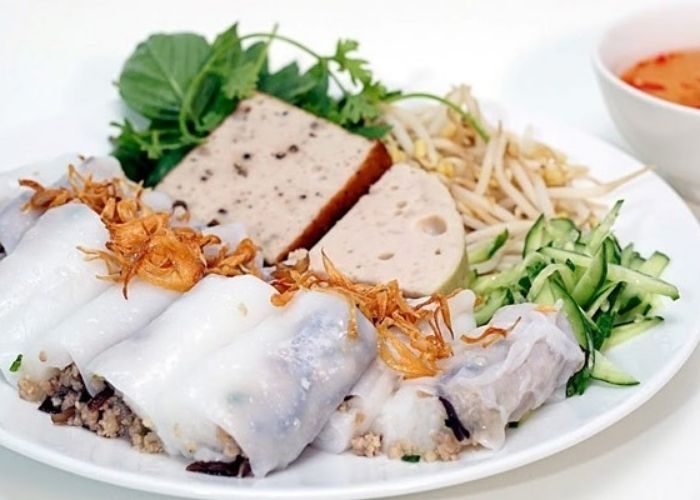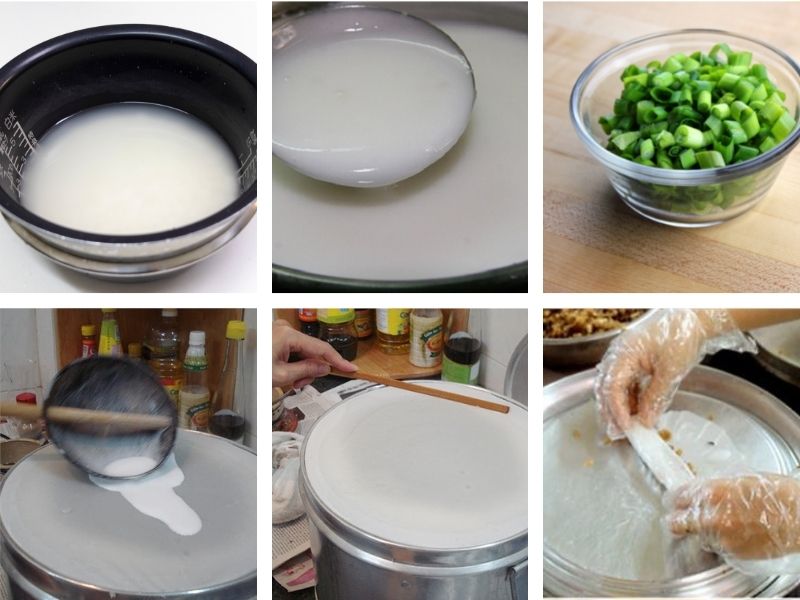Bánh Mướt
1. What is Bánh Mướt?
Bánh Mướt is a traditional Vietnamese rice cake originating from Nghệ An province, especially popular in rural districts like Diễn Châu, Yên Thành, and Tân Kỳ. At first glance, it may resemble northern Vietnam’s bánh cuốn, but bánh mướt has no filling and offers a smoother, more delicate texture. It is a soft, thin rice roll typically served with savory accompaniments like pork sausage (chả), stewed meat, or chicken curry.
This dish reflects the essence of Nghệ An’s countryside cuisine—simple, modest, but full of heart and flavor.
2. Characteristics of Bánh Mướt
Bánh Mướt is made from finely ground rice flour, steamed into thin, white sheets. Its name “mướt” refers to the soft, silky texture that almost melts in your mouth. The rolls are usually cut into rectangular pieces and may be served warm or at room temperature. Unlike bánh cuốn, it is rarely stuffed, allowing the purity of the rice and the dipping sauce to stand out.
The rice cake itself is bland, which makes it an ideal base to pair with bold and savory sides or dipping sauces.
3. Ingredients and How It’s Made
Though the ingredients are simple, making bánh mướt requires precision and skill:
-
Rice flour: Traditionally soaked and ground from fresh rice (not premade flour) for better elasticity.
-
Water: Mixed with rice flour to form a thin batter.
-
Oil: Lightly brushed to prevent sticking.
Preparation Process:
-
The batter is poured thinly onto a steamer cloth stretched over boiling water.
-
After 30–40 seconds of steaming, the rice sheet is carefully lifted and placed on a flat surface.
-
The sheets are folded or rolled into rectangles or logs, brushed with a little oil for shine and softness.
-
Serve with chả lụa (pork sausage), pork ribs, or curried chicken, and a bowl of fish sauce with chili and lime for dipping.
4. How to Enjoy Bánh Mướt
Bánh mướt is incredibly versatile. People enjoy it in different ways depending on the region and occasion:
-
With chả (Vietnamese pork sausage) for a quick breakfast or light lunch.
-
With stewed pork ribs or intestines for a richer, more filling version.
-
With chicken curry—a local specialty in some parts of Nghệ An.
-
Always served with nước mắm chấm—a sweet, savory, sometimes spicy fish sauce dipping blend.
Locals often eat bánh mướt during breakfast or on special occasions like weddings, family gatherings, or Tet holidays.
5. Cultural Importance
Bánh Mướt is more than just food—it’s a culinary tradition rooted in family and community life. In the countryside, it’s common to see families wake up early to steam bánh mướt for sale at local markets. The dish represents patience and craftsmanship, as every roll must be made by hand and with care.
For many Nghệ An people living far from home, bánh mướt carries deep nostalgia—a soft, warm taste of childhood and hometown breakfasts. It also stands as a symbol of local identity, preserving the memory of simpler times and the quiet beauty of rural Vietnamese cooking.



